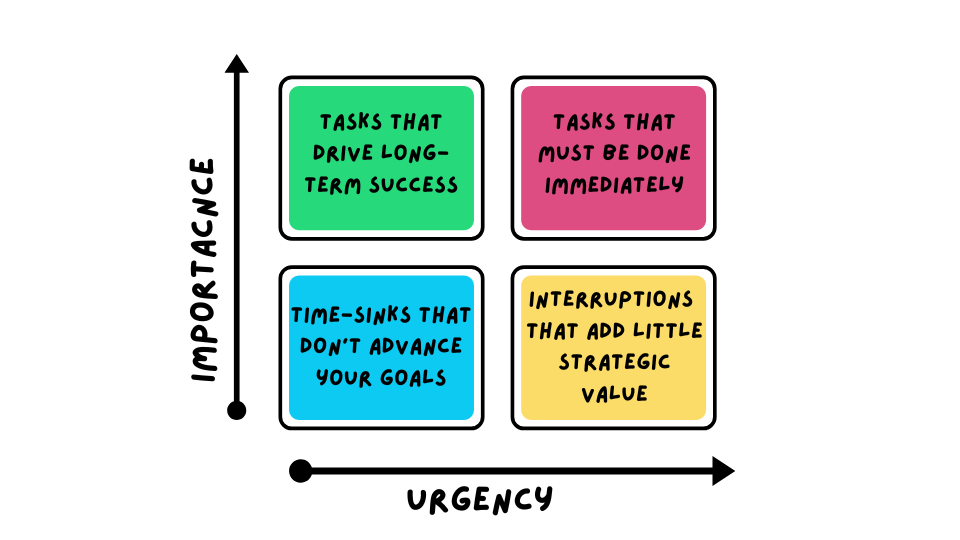Unlocking Tech Success: Mastering Decision Making and Prioritization
A newly launched feature once overshadowed critical bug fixes on my team. Stakeholders demanded immediate action everywhere. Engineers juggled too many tasks, and team morale dropped. This challenging situation taught me that success in fast-paced tech environments requires streamlined decision-making and clear prioritization.
Technology work often feels urgent. Learning to identify what matters most helps teams reach their goals on schedule.
The Reality of Decision Making
Our team recently managed multiple high-priority projects simultaneously. We added people and worked longer hours, yet quality declined. This experience revealed an important truth: Complex projects succeed through clear, shared decisions.
Smart prioritization matters more than increased effort. We paused to meet with the team and identify where our time would create the biggest impact. Several key insights emerged:
- Teams need a decision-making framework to stay focused and effective
- Clear priorities help everyone understand their most important tasks
- Strategic compromises protect the team's ability to deliver high-impact work
By choosing specific focus areas, we found our rhythm again. The team shifted to deliberate, high-value work.
Mastering the Art of Prioritization

Contents
The Eisenhower Matrix provides a powerful framework for organizing tasks into four categories:
- Urgent and Important: Immediate needs like critical production bugs
- Important but Not Urgent: Strategic work like technical planning and system improvements
- Urgent but Not Important: Minor interruptions that distract from core goals
- Neither Urgent nor Important: Tasks with minimal strategic benefit
This visual organization transformed our workflow. The team began responding thoughtfully to new requests instead of treating everything as urgent. We worked with stakeholders to categorize tasks and set realistic timelines for delivery.
Transitioning to Autonomous Teams
Clear priorities enabled greater independence. Engineers confidently chose high-value tasks because they understood our goals and priorities. This increased team morale and freed up leadership time.
Teams need time to adjust to new prioritization systems, especially after experiencing frequent priority changes. A simple framework combined with trust in their judgment helped create confidence in decision-making.
Navigating Complexity with Confidence
Balancing Stakeholder Expectations
Tech organizations involve many stakeholders. Product managers, executives, and customers often want immediate results. When a stakeholder requested a new feature during scheduled refactoring work, I explained our reasoning clearly:
- The refactoring's purpose: preventing outages and improving maintainability
- Timeline impacts of shifting resources
- Effects on product stability and customer satisfaction
Detailed explanations of risks and benefits helped gain support for our technical priorities.
Regular communication with stakeholders helps them understand how priority changes affect different projects. Stakeholders often support technical decisions when they see the complete context.
Embracing Flexibility
Complex projects involve uncertainty. Successful planning balances adaptability with clear direction. When client needs changed suddenly on one project, our flexible planning helped us adjust while maintaining focus on key goals. We updated timelines and workloads systematically to keep the team stable.
Building a Culture of Continuous Learning
Every decision provides learning opportunities to improve future processes.
Regular Retrospectives
- Recognize successful decisions
- Identify areas for improvement
- Create specific action items for changes
Open discussions help team members share concerns early, preventing larger problems.
Balancing Short-Term and Long-Term
Teams must balance new features with technical maintenance. We created a sustainable approach:
- Allocate specific capacity percentages to features and maintenance
- Explain maintenance value to stakeholders as a strategic investment
- Track improvements in stability and speed to demonstrate benefits
The Path Forward
Decision-making and prioritization skills grow through practice. Each challenge builds wisdom for future situations. Consider these steps:
- Start with a basic framework like the Eisenhower Matrix
- Share your reasoning for task priorities openly
- Create a supportive environment where people feel confident making decisions
Clear priorities drive both innovation and satisfaction. Teams perform best when everyone understands their most important work.
Related Posts
Navigating Trade-Offs: Strategies to Combat Decision Fatigue for Tech Leaders
Building a sustainable decision-making process helps you and your team thrive.
Beyond Gut Feel: Diverse Voices and Data for Smarter Leadership
Using rigorous analysis and open collaboration creates a culture where both numbers and human perspectives guide decision-making.
They're Still There, Even If You Can't See Them: Leading Fully-Remote Engineering Teams
Strategies for building connection, trust, and high performance in distributed engineering teams through practical rituals and leadership approaches.
Geoffrey Dagley
Tech Innovator and Startup Enthusiast | Leading Remote Teams, Agile Methodologies | Cloud Computing, Emerging Technologies | 75+ Patents for Groundbreaking Ideas